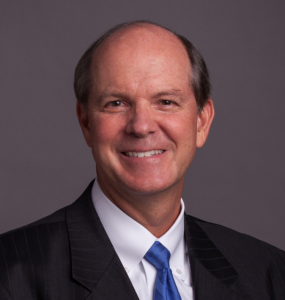Creating smart cities of the future
 As more and more people begin understanding the vision of what smart cities can be and how we will live in them, action plans become even more important. Turning vision into reality takes hard work, persistence and significant resource investments.
As more and more people begin understanding the vision of what smart cities can be and how we will live in them, action plans become even more important. Turning vision into reality takes hard work, persistence and significant resource investments.
American Electric Power (AEP) Ohio is one utility company leading the smart cities movement. In Columbus and throughout Ohio, the template for change is forming with a multiphase plan that will:
- Demonstrate advanced data and intelligent transportation systems that can be used to aid mobility, reduce congestion and keep travelers safe
- Use energy more efficiently
- Respond to climate change
- Connect and create opportunities for underserved communities
- Support economic vitality
AEP Ohio is a key partner in realizing the vision for Smart Columbus, a comprehensive program that was named the winner of the federal government’s Smart City Challenge. In 2016, Columbus received a $40 million grant from the U.S. Department of Transportation and additional $10 million from philanthropist Paul Allen to launch a whole range of smart cities initiatives.
The vision in Ohio and elsewhere can be built out on top of a backbone of three key components: net zero energy programs, high-capacity broadband and master-planned transportation.
- Net zero energy creates a sustainable neighborhood. The energy used there is produced there, with a focus on affordability.
- High-capacity broadband enables planners to reach out to entrepreneurs to find out the types of things they would do in such a neighborhood. How could they harness the connectivity to create something new and desirable — something that would generate revenue to support their presence and draw employees and residents to the neighborhood?
- Transportation planning is the foundation for activity in this “innovation neighborhood” — how people get there, move within it, live there. The neighborhood might incorporate mobility features such as ride services, mass transit connections, street layouts, parking capacity and vehicle charging capabilities.
AEP Ohio has become a critical partner in proving the concept since most components are energy-related. For example, part of this innovative plan in Columbus will expand the smart grid with more than a half-million advanced meters plus other grid technology. These meters are interconnected to another crucial piece of the plan to install nearly 1,300 electric vehicle charging stations, including 1,000 charging stations in homes.
Microgrids are part of the plan as well. AEP Ohio is installing up to 10 microgrids for critical facilities such as police and fire stations, medical facilities, social service agencies and other facilities needed for public health and safety.
In cities like Columbus, public and private leaders face the challenge of figuring out how to retrofit existing neighborhood infrastructure with new layers of technology-enabled capabilities. This fast-growing phenomenon is real. Colorado-based Navigant Research predicts that the market for smart cities technology will reach $27.5 billion within five to six years.
These are exciting developments that reaffirm our definition of a smart city as a community that connects the basic infrastructure of diverse neighborhoods and communities to drive operational excellence, revenue potential and sustainable customer lifestyles.
As I travel around the country visiting with utility, energy and community leaders, I am most excited to hear new stories about how smart communities are evolving in your area.
Electric utilities are using their knowledge of local infrastructure to create the smart cities of the future. Click here to see how next-generation utilities can take the next step.
Mike Beehler, a vice president at Burns & McDonnell, has extensive experience in industry policy and emerging technologies applied throughout North America. Mike has written and presented extensively on the subjects of security, reliability-centered maintenance, program management and the smart grid. More recently, Mike has written, presented and consulted on industry megatrends, the integrated grid and smart cities. He is a registered professional engineer in eight states, a member of IEEE and CIGRE, and a Fellow in the American Society of Civil Engineers.



















